The experts in boutique travel To Peru and South America
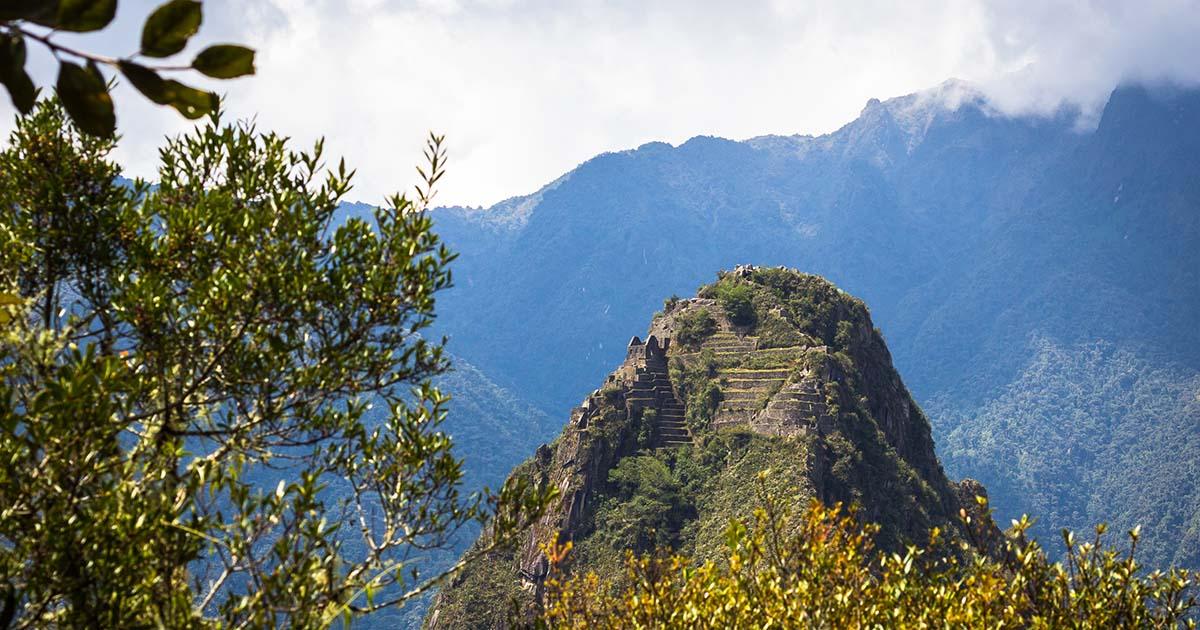
Originally, Huayna Picchu is thought to have been occupied by Incan high priests. Each morning they would travel to and from Machu Picchu on a mountainside path. Today, visitors can hike to the top of Huayna Picchu via parts of this original Inca trail. The mountain’s proximity to the Inca city affords hikers with exceptional aerial views of the ruins.
The Huayna Picchu hike is one of Peru’s most sought-after tourist activities. It is challenging yet rewarding. To ensure that your experience is a success, we’ve shared essential facts and expert recommendations on how to conquer this mountain.
*This article was last updated on November 2, 2022. It was originally created on June 17, 2020.
**Cover photo by Daniella Beccaria.
The Peruvian government allots 200 tickets each day for the Huayna Picchu hike. These tickets are divided into four entrances:
| Entrance Tickets | Huayna Picchu Entrance Time | Private Machu Picchu Tour* |
|---|---|---|
| Option 1 | 7:00–8:00 am | After the hike |
| Option 2 | 8:00–9:00 am | After the hike |
| Option 3 | 9:00–10:00 am | Before the hike |
| Option 4 | 10:00 am–11:00 am | Before the hike |
Tickets for Machu Picchu typically do not sell out more than 3 months in advance. However, tickets for the Huayna Picchu hike can sell out several months in advance. Therefore, make sure to decide as soon as possible if you would like to do the hike.
*Visitors can both hike Huayna Picchu and take the Machu Picchu tour on the same day. For a more relaxed pace, you can also split the two activities between two days. Spending two days at Machu Picchu is especially recommended during the rainy season when inclement weather is likelier.
To preserve the archaeological ruins and prevent overtourism, the Peruvian government has imposed stricter regulations at Machu Picchu in recent years. Below are some key points to keep in mind for your visit to the ruins and for the Huayna Picchu hike:
Machu Picchu is a year-round destination. However, there are both advantages and disadvantages to traveling at certain times.
Below we have illustrated the advantages and disadvantages of each hiking ticket:
| Entrance Tickets | Advantages | Disadvantages |
|---|---|---|
| Options 1 & 2 (first hiking entrances) | •Cooler temperatures •Hikers only traveling in one direction (option 1 only) •Slight chance to catch the sunrise in winter months (option 1 only) | •Greater chance of mist and cloudy skies •Must meet your tour guide at a specific time after the hike (you may feel rushed to finish the hike) |
| Options 3 & 4 (second hiking entrances) | •Greater chance of clear skies •Machu Picchu tour before the hike (no rush to finish the hike) | •Warmer temperatures •Hikers from the first slot descend while later shift hikers ascend |
In general, options 1 & 2 are ideal for travelers who prioritize comfort over views. During the 7:00 am–8:00 am Huayna Picchu entrance time, temperatures are cooler and travelers will, for the most part, be traveling one way.
Options 3 & 4 are recommended for travelers who want excellent views of Machu Picchu and are not bothered by crowds. During these shifts, there is a greater chance that the morning mist will have subsided. Also, with the later entrances, the Machu Picchu tour is before the hike. Therefore, you will not be rushed to finish your hike to meet your guide at the tour’s designated start time. Instead, you will have more time to enjoy the stunning views from above.
*Inca Trail trekkers (2-day and 4-day) must choose options 3 or 4 if they would like to take the group Machu Picchu tour included with their trek.
There are two distinct seasons at Machu Picchu: rainy season (December through March) and dry season (June through September). The months that lie in between are shoulder seasons.
Even during the rainy season, it does not usually pour all day at Machu Picchu. However, you should expect to experience some showers. It is also likely to be quite cloudy. While this can sometimes add a sense of mystique, abundant cloud cover and mist can obstruct the views of the ruins.
Contrarily, during the dry season, rain is less likely and sunny skies are typical. Crowds at Machu Picchu are much more common during the dry season. However, due to Huayna Picchu’s popularity, hiking tickets usually sell out months in advance throughout the year. As a result, the number of hikers does not vary between the two seasons.
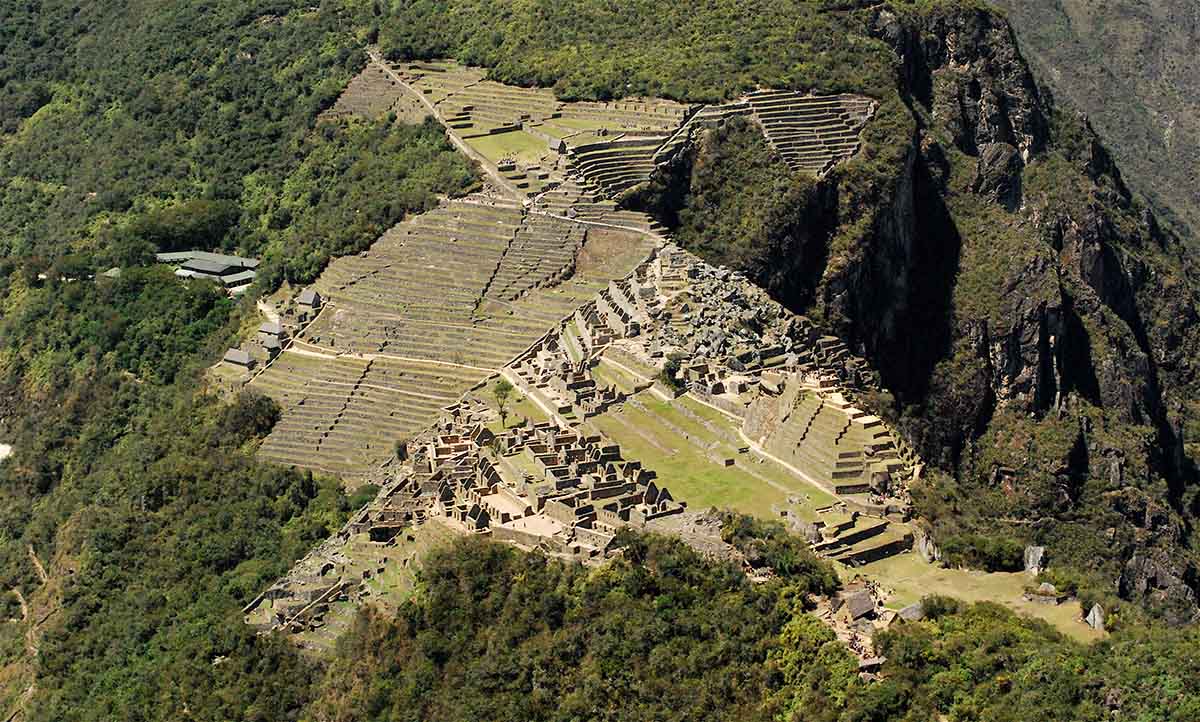
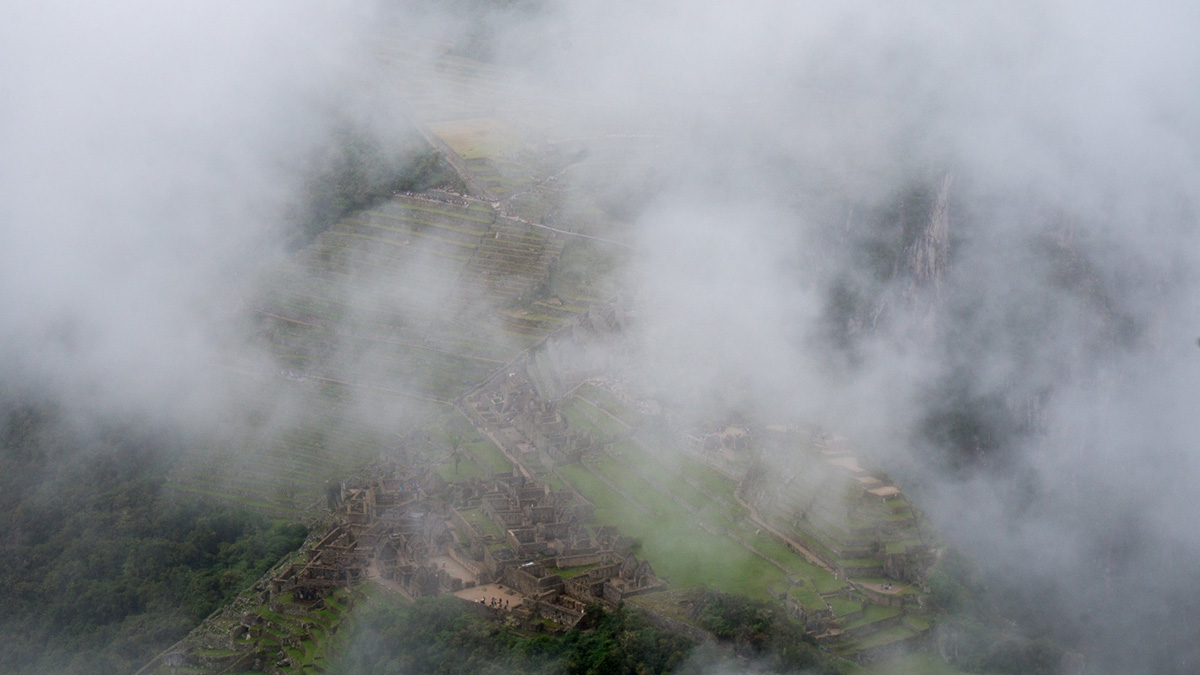
Follow these steps to get from the town of Aguas Calientes to the Huayna Picchu summit:
After waking early, enjoy breakfast and check out of your Aguas Calientes hotel. (The front desk will gladly store your luggage while you are at Machu Picchu). Walk to the bus station where you may wait up to 1 hour to board the bus. Buses depart every 15 minutes. However, the length of the line varies according to the season.
Reminder: Make sure to bring your original passport with you. You will need this to enter both Machu Picchu and Huayna Picchu.
After the 20 to 25-minute winding bus ride up the mountain, follow one of the next steps according to your Huayna Picchu time:
If you have a 7:00–8:00 am or 8:00–9:00 am Huayna Picchu entrance time:
If you have a 9:00–10:00 am or 10:00–11:00 am Huayna Picchu entrance time:
At the trailhead, you will have to show your original passport at the hike’s entrance gate. There is also a sign-in/out sheet. From here you will begin the hike!
*Hikers only have one hour to begin the hike after the indicated Huayna Picchu ticket start time. Therefore, we recommend that you arrive at the trailhead early.
Machu Picchu was declared a UNESCO World Heritage Site due to its rich cultural and natural wonders. Below are some highlights of the Huayna Picchu hike.
Most of Huayna Picchu mountain is under forest cover; however, the views from the peak make the hike up well worth it. At the top, hikers can enjoy phenomenal aerial views of Machu Picchu, as well as astounding mountain vistas. It is the perfect place to take a moment to reflect on your journey thus far.
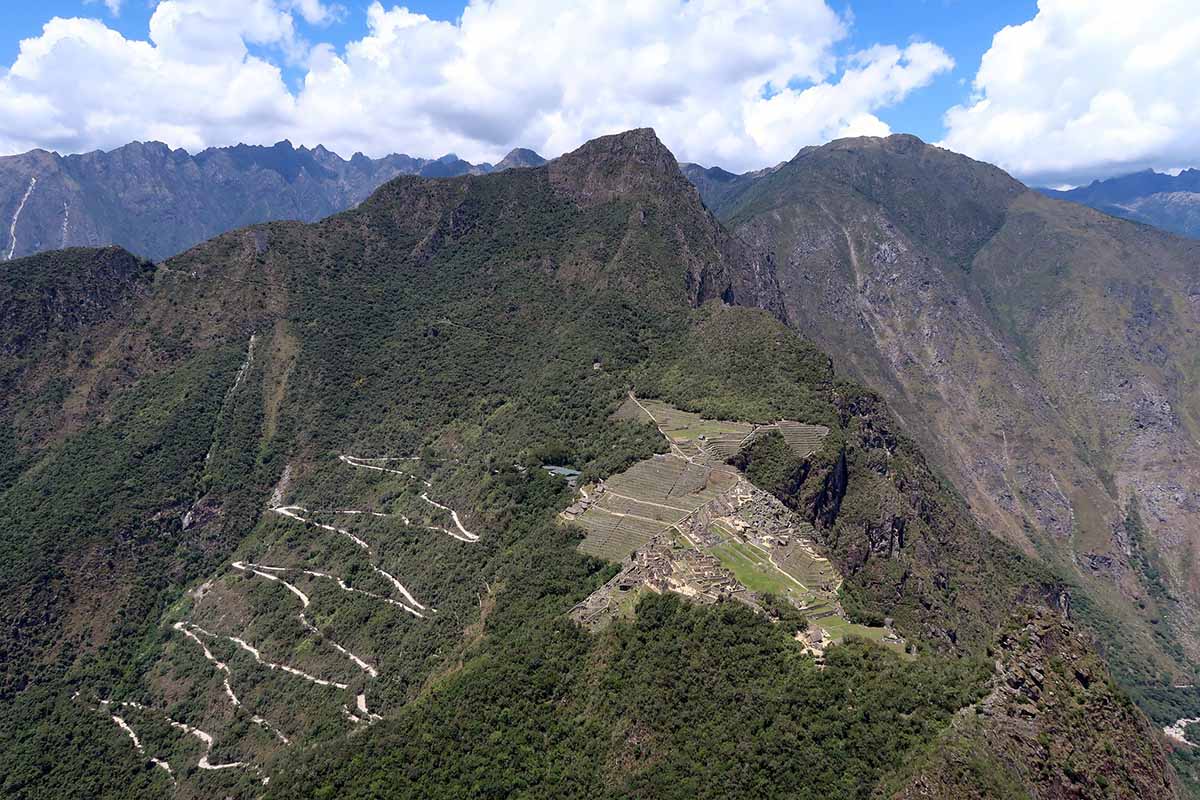
After reaching Huayna Picchu’s summit, hikers have the choice of two trails for their return to Machu Picchu. The first option is to descend along the same path that they took up to the summit. The second option is to hike to the Temple of the Moon.
The Temple of the Moon is a 1,500-year-old temple built within two caverns. Although its purpose is unknown, scholars theorize that it was a ceremonial site used for worship, royal burials, or sacrifices. Despite its name, most experts do not believe that the moon was symbolically relevant to this site. However, others have suggested that the name is the result of the way moonlight illuminates the cavern.
This temple is particularly intriguing due to its impressive Inca stonework and eight-meter-high false doors cut into the walls. You will also find representations of the condor, puma, and snake, which in Incan beliefs represent the heavens, earth, and underworld, respectively.
To reach the temple, hikers must descend the side of the mountain that does not face Machu Picchu. As you must cross the mountain and circle back before catching up with the main path back to Machu Picchu, the hike to/from the Temple of the Moon requires an additional 1–1.5 hours.
Warning: The trail leading to the Temple of the Moon can be very slippery, especially during the rainy season. Overall, the trail is very steep, and extreme caution should be taken.
You may have heard about Huayna Picchu’s “Stairs of Death.” Off the main path are diagonal rows of Inca steps that perpendicularly jut from the side of the mountain. The Stairs of Death are also referred to as Huayna Picchu’s “floating steps” as there is a deep abyss beneath them. Only air separates them from the Utcubamba River over 1,000 feet below.
These stone steps allowed the Incas to reach their terraces on Huayna Picchu without crushing their crops. They also deterred access to animals like llamas and alpacas.
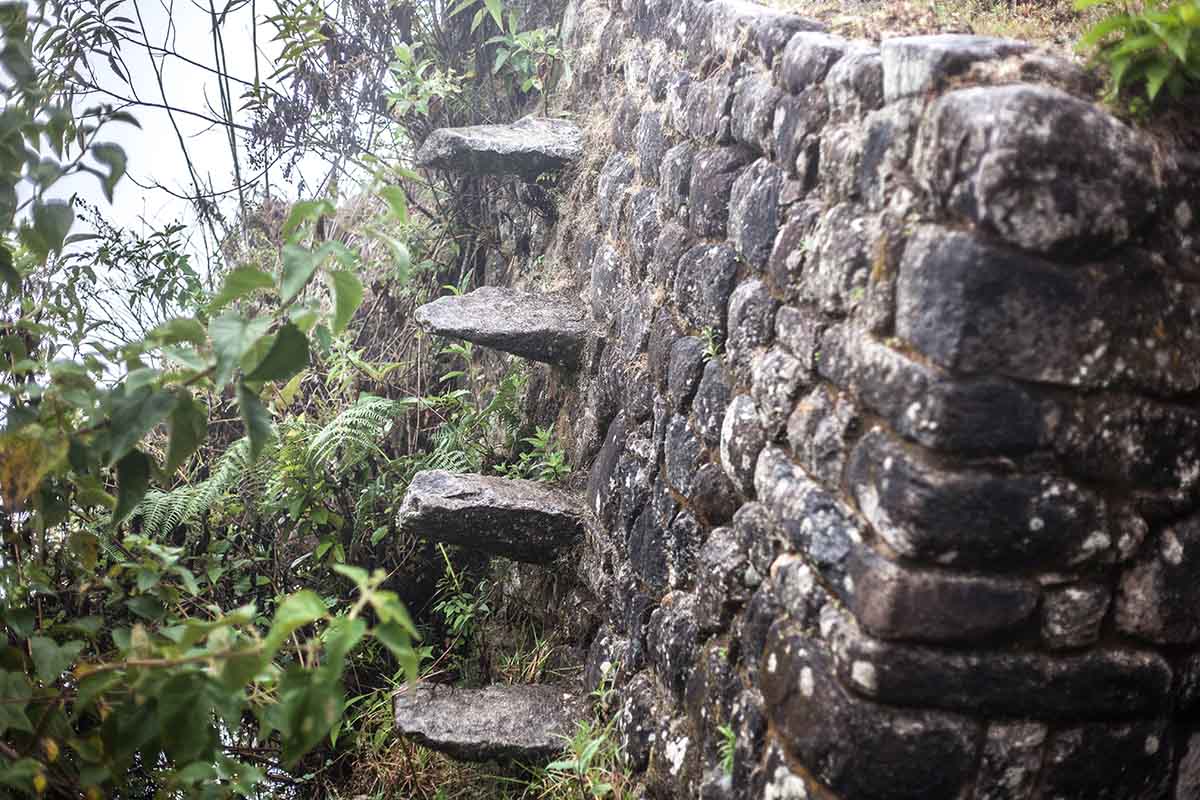
Due to the risk of falling, the stairs are roped off from the public. Instead, continue on the main path and snap a photo of these iconic steps during your ascent.
In addition to its fascinating archaeological ruins, Machu Picchu and its surrounding cloud forests are inhabited by a variety of plant and animal species. In fact, this part of Peru is particularly popular with bird-watchers. Here are just some of the species that you may encounter during your visit to this region of Peru:
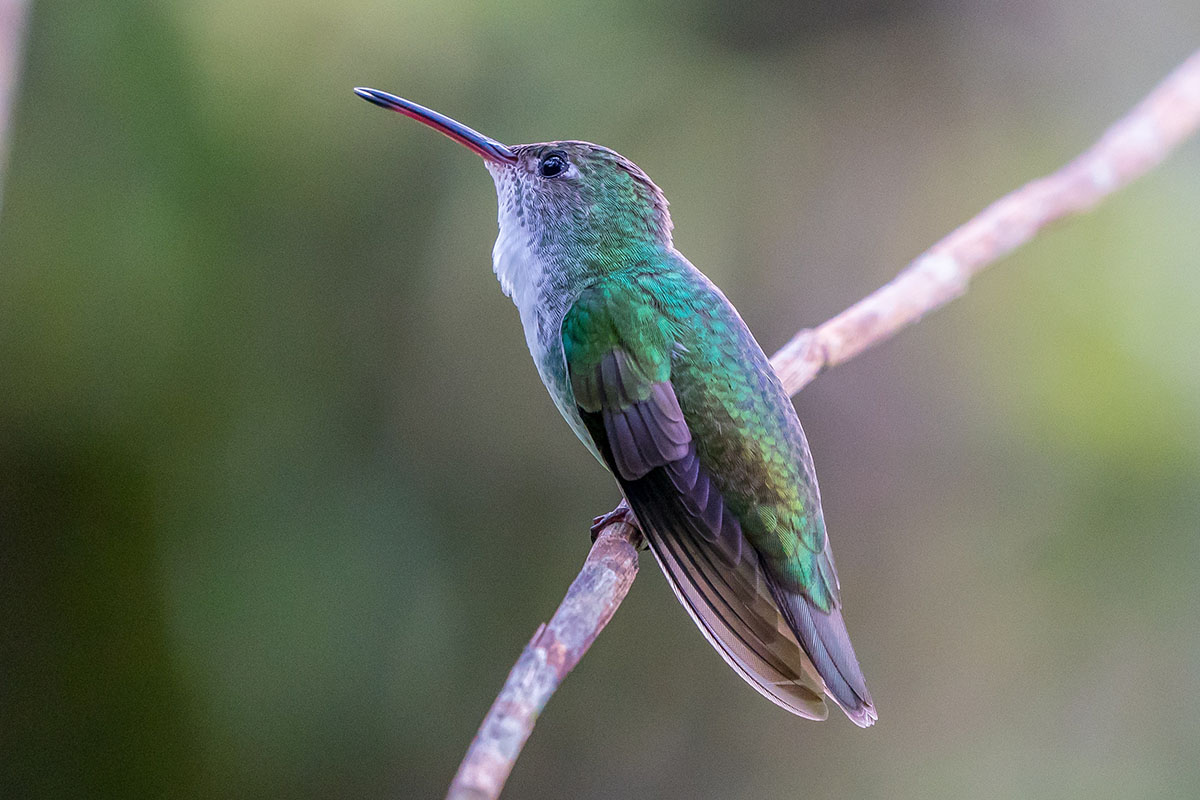
Although it only takes about 3 hours roundtrip to hike Huayna Picchu, the trail’s steep incline makes it all the more challenging. Hikers encounter many stone steps throughout the hike. However, the steep stairs at the top and the sharp drop-offs are particularly frightening for some travelers.
While some areas of the hike are equipped with steel hand cables, in most sections there are no handrails whatsoever. Similar to the Temple of the Moon, the stairs are very slippery when wet.
With this in mind, the Huayna Picchu hike is not recommended for travelers who experience vertigo or acrophobia. Likewise, young children (<13 years old) are not advised to hike this mountain. Children should only hike Huayna Picchu if they have experience hiking.
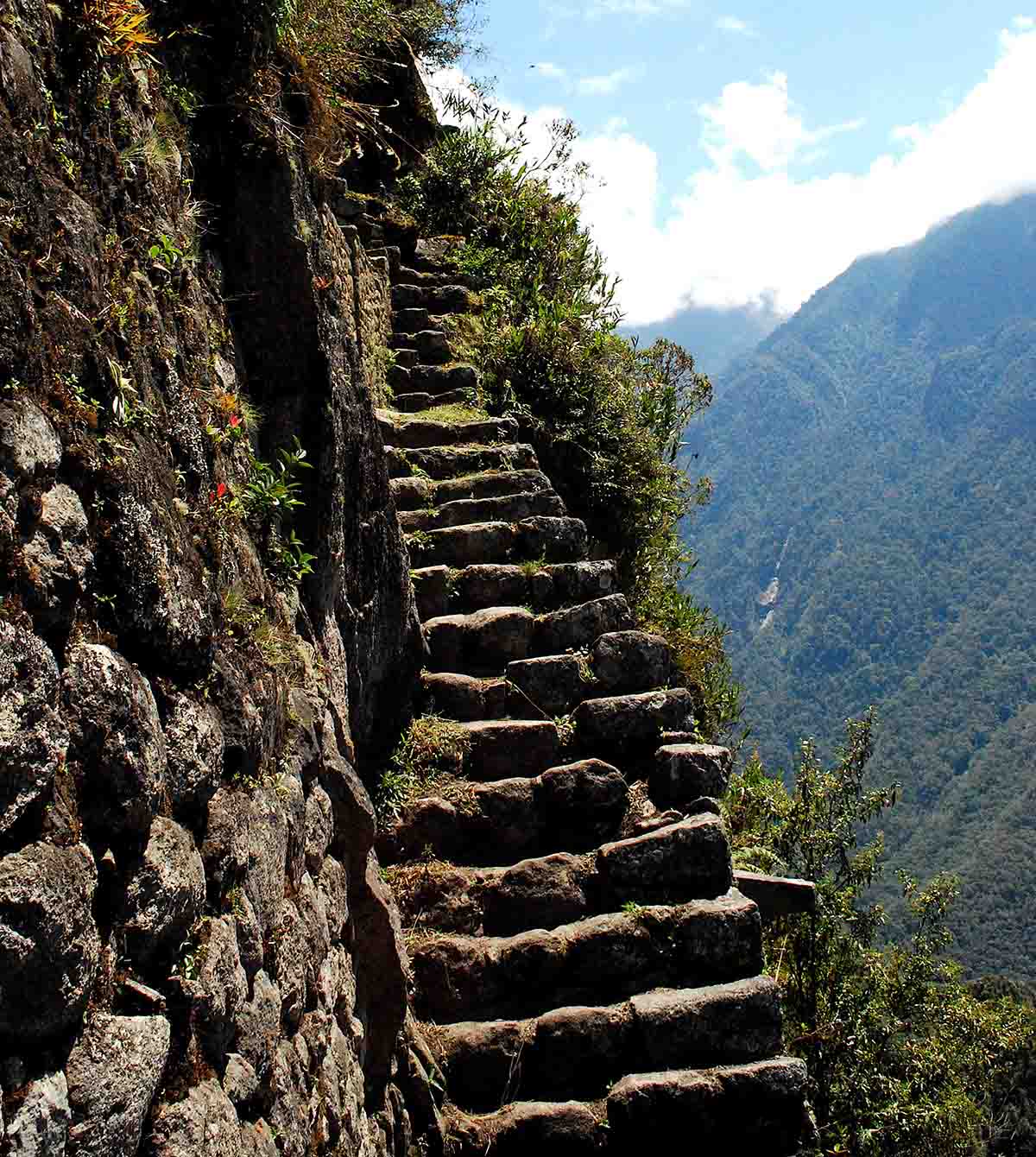
Although commonly thought to be higher in elevation than Cusco and the Sacred Valley, Machu Picchu is actually located at a lower elevation. Machu Picchu is situated at 7,972 ft (2,430 m) whereas the summit of Huayna Picchu is at 8,924 ft (2,720 m). However, as altitude sickness (acute mountain sickness) can affect people at elevations as low as 6,600 ft (2,500 m) above sea level, it should not be disregarded on a trip to the ruins.
There are precautions that you can take before and during your trip to decrease your chance of developing altitude sickness. Click here for more information about altitude sickness and preventative suggestions. Be sure to also speak with your physician before traveling to Peru.
As with any hike, prior physical training will make the experience more enjoyable. We recommend that you start your training at least two months prior to your trip. After all, a trip to Machu Picchu is a once-in-a-lifetime experience!
If possible, combine stretching, squats and lunges, core work, jogging, and practice hikes. Check out the following training guide for expert tips on how to physically prepare for hiking:
While Huayna Picchu is Machu Picchu’s most iconic hike, it is not the only option. A second mountain, Machu Picchu Mountain, is located on the opposite side of the ruins and also offers splendid vistas.
Rising to 10,007 ft (3,050 m) above sea level, Machu Picchu Mountain is 1,083 ft (330 m) taller than Huayna Picchu. Therefore, it is physically more challenging. It takes about 4 hours to complete.
Unlike Huayna Picchu, this gentler path winds around the mountain resulting in several viewpoints along the way. For this reason, Machu Picchu Mountain is an excellent choice for families and travelers who only wish to do a partial hike. There are no archaeological ruins or terraces on Machu Picchu Mountain.
Due to its proximity to the ruins, Huayna Picchu has incredible aerial views of Machu Picchu. In comparison, Machu Picchu’s main ruins are not as visible from the Machu Picchu Mountain summit because of the greater distance. However, the views of the landscapes are phenomenal!
*Tickets for Machu Picchu Mountain also sell out months in advance. Make sure to book early to avoid missing out!

The weather and temperature at Machu Picchu are variable, no matter the season. We recommend to wear layers as the mornings at Machu Picchu can be quite cool. You’ll warm up quickly under the sun and during the hike. Below are a few recommended items to bring with you to Machu Picchu:
To simplify your planning, we’ve also compiled this comprehensive list of what you’ll need during the rest of your journey in Peru.
If you are in search of an adventure, experience Machu Picchu to the maximum by adding the Huayna Picchu hike to your itinerary. You’ll be amazed by its magnificent views of both the ruins and the surrounding landscapes. It is an excellent way to extend your visit to Machu Picchu, and for many travelers, it is the highlight of their trip.
Contact us to begin planning this extraordinary adventure!

Liz found herself in Peru by following her passion for wildlife conservation. In remote parts of the Peruvian montane forests, she also discovered a love for arracacha (her favorite Andean tuber) and spicy rocoto sauce.
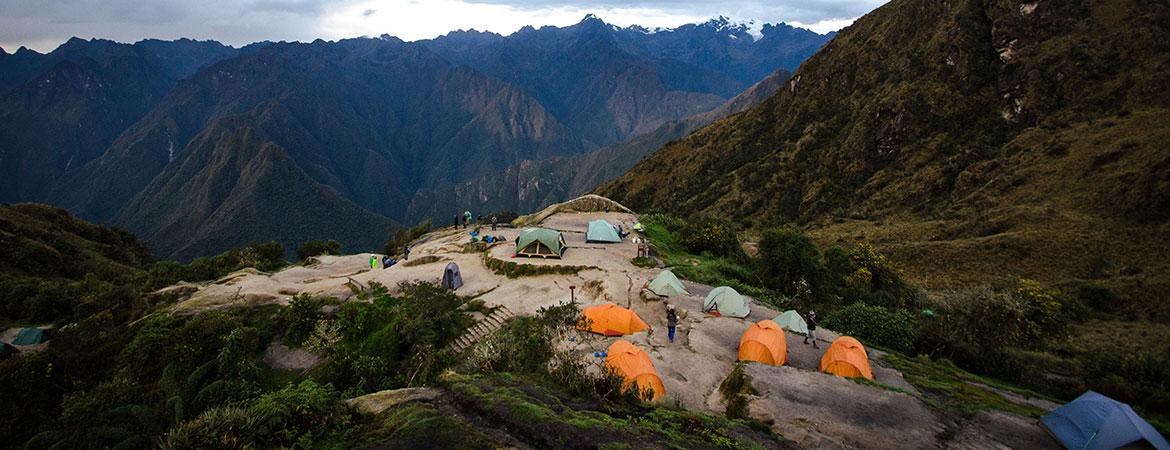
Stretching 42 km (26 mile) from the Sacred Valley to the Sun Gate of Machu Picchu, the classic Inca Trail traverses some of the most riveting landscapes in all of Peru.
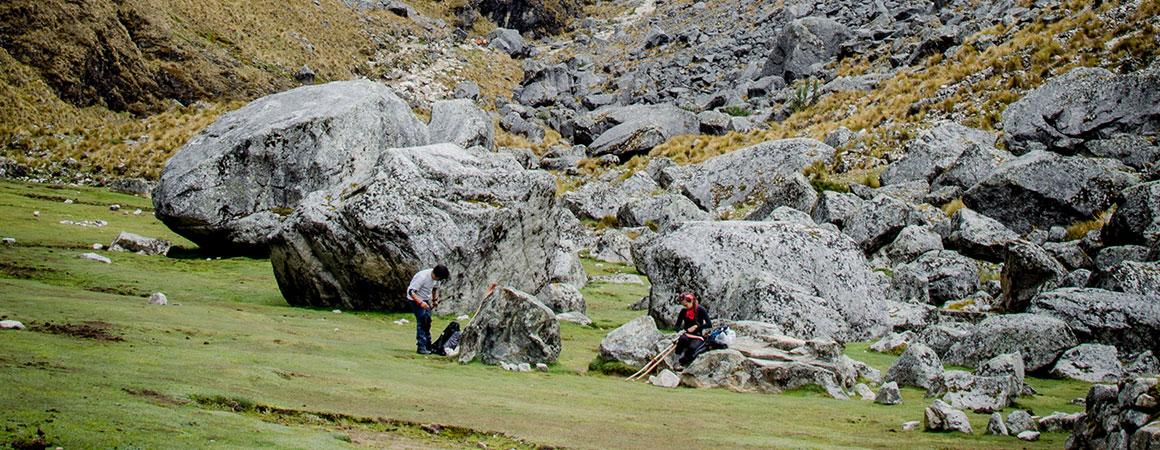
Among the many alternative treks to Machu Picchu, there are a handful we recommend to travelers who want to upgrade their trekking experience.